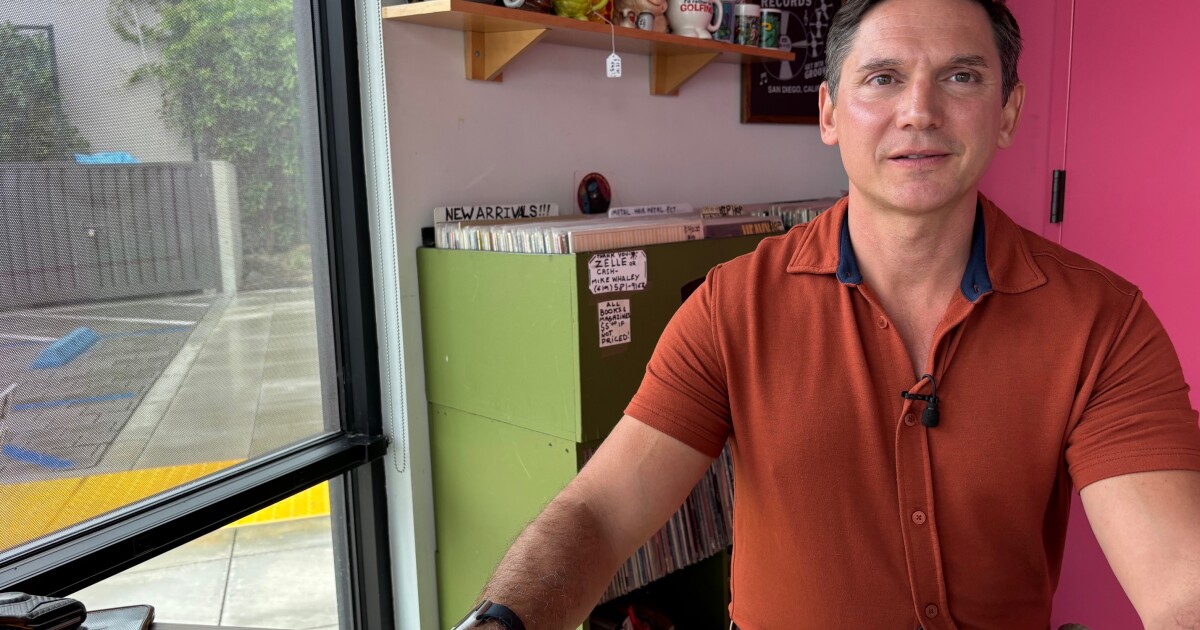AI holds a place in our lives. How do we make it fit? – KPBS

An animated video conceived by McAuley Buhlis shows, among others, a pot-smoking elf and a hyper-aggressive security guard. They are characters in a Dungeons and Dragons campaign, for which Buhlis is the Dungeon Master.
He got a little help creating the video from artificial intelligence.
He made the video using Sora, one of the features of ChatGPT. He said he plays it to help get the game’s players into character, “doing things that are either relevant to their background. Relevant to what they’re going in the campaign. And then I edit that into an intro video that I play before our session so my players can see their character in the world,” Buhlis said.
Artificial intelligence has a foothold in all aspects of our lives. San Diegans are managing AI at their universities, their workplaces and in the games they play.
Buhlis learned to use artificial intelligence while working for Amazon Web Services. When he got into D&D, ChatGPT became his editor buddy who gives him ideas, based on his game scenario, and helps him come up with stories set in San Diego.
AI isn’t going to replace Buhlis unless his D&D friends really would rather hang out with an algorithm on weekend nights. But is making Buhlis a better dungeon master the kind of outcome we’d like to see in our workplaces? Will AI help us work better — or will it replace us?
“We need to figure out how to use it and how to enhance the human experience by allowing it to do certain tasks. That will require rethinking large aspects of our society, for sure,” said Hugo Villar, the dean of extended studies at UC San Diego.
Villar said routine jobs that require lots of attention to detail are on the list of professions, already being replaced by AI.
“Computer scientists are being replaced by AI because higher skilled programmers can use AI to do what was the realm of having hundreds of programmers doing individual pieces of the code to create the software,” Villar said.
He said blue collar jobs are certainly in demand for building and maintaining the many data centers and other infrastructures that support AI. But expect that to change in the future.
“Eventually they will also be affected at the time when AI merges with robotics, because that’s an entirely different set of things. And there the tools will become intelligent and will be able to do all sorts of things that, right now, we need a human being to deal with,” he said.
AI may be a modern solution for mundane tasks in the workplace. But at UCSD it’s taken a Socratic turn to help students learn with an AI chatbot named Kennan. He is designed to draw out students with questions.
Kennan is the work of Paul Hadjipieris, an adjunct history professor and education specialist at UCSD. He and I asked the bot to write a history essay for me.
“I understand that writing essays can be overwhelming sometimes, Tom,” Kennan said. “But we really want you to develop your own skills, and it’s against the academic guidelines for this course. But I will brainstorm with you.”
“OK. So how did the Cold War start?” I asked Kennan.
“Great question Tom! The start of the Cold War was a major turning point,” Kennan responds, going on to ask me my thoughts on the subject.
Hadjipieris said his real students regard AI in many different ways.
“They’re a mixed bag. Some students are interested and excited to use it. Their skills are a little more advanced. Others haven’t touched it,” he said. “But regardless of whether students are using it or not using it, they all understand that it’s part of our future.”
UCSD has created an artificial intelligence major in computer science and engineering. But Hadjipieris says it has made AI literacy a goal for students in all fields.
He is part of a group of faculty that’s created a curriculum to help students get a grounding in artificial intelligence. When it comes to AI’s role in learning, he gives the example of a student who was expected to analyze a very large number of sources for a term paper. She used AI to summarize them so she could focus on the two that she wanted to examine more deeply.
“And I think the learning happens not from the amount of sources but the quality of the analysis,” Hadjipieris said.
AI is a moving target that’s developing at a rapid pace. Hugo Villar and others talk about three stages of artificial intelligence. The first, Narrow AI, is where it can do extremely well at a single task. It’s where we are today.
But theoretically we expect to see General AI, where a machine will understand all aspects of a world as well as a human. And then there’s Super AI, where a machine would have superior cognitive abilities; imagine the character Data in “Star Trek: The Next Generation.”
But creating a place for technologies like AI is nothing new, says Hugo Villar. He chooses to see the glass half full.
“We shouldn’t be scared about that,” he said. “We did it before in different times in human history. So I am optimistic. We will find things where humans are still needed and they have a place.”
KPBS keeps you informed with local stories you need to know about — with no paywall. Our news is free for everyone because people like you help fund it.
Without federal funding, community support is our lifeline.
Make a gift to protect the future of KPBS.